 “There is an impression abroad that everyone has it in him to write one book; but if by this is implied a good book the impression is false.”
“There is an impression abroad that everyone has it in him to write one book; but if by this is implied a good book the impression is false.”
W. Somerset Maugham, The Summing Up
Terry Teachout on the arts in New York City
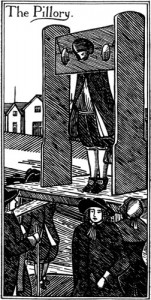 The publication of Jon Ronson’s So You’ve Been Publicly Shamed has triggered much discussion of the phenomenon of social-media “shaming,” most interestingly and convincingly by my friend Megan McArdle:
The publication of Jon Ronson’s So You’ve Been Publicly Shamed has triggered much discussion of the phenomenon of social-media “shaming,” most interestingly and convincingly by my friend Megan McArdle:
Twitter makes it absurdly easy to shame someone. You barely have to take 30 seconds out of your day to make an outraged comment that will please your friends and hurt the person you’ve targeted. This means it is also absurdly easy to attack someone unfairly, without pausing to think about context—or the effect you are having on another human being much like yourself. No matter what that person did, short of war crimes, you probably would not join a circle of thousands of people heaping abuse upon a lone target cowering in the center. But that is the real-world equivalent of what online shame-stormers do.
This sort of tactic may buy silence, though it is likely to be the most effective on people who already agree with you and simply said something infelicitous. What it cannot buy is community, beyond the bonds that build between people who are joined in collective hate….
If we want shaming to be restorative—to help us create and enforce better norms in a broad community—then it needs to come paired with charity and forgiveness. Shame-storms rarely offer either; the shame is administered, then the storm drizzles away, leaving only a terrified victim and Google’s memory of our momentary collective outrage.
To this I would add a personal footnote, which is that I never cease to be struck by the fact that so many people still fail to grasp that the social media are public. These technological innocents seem to think that you can use them to communicate exclusively with a small circle of friends—which is normally true. Yet the potential for attracting an infinitely wider audience is always there.
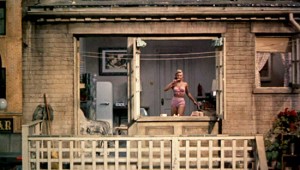 It’s as if you were having sex in the living room of an apartment located on an upper story of a high-rise building. Should you opt to leave the curtains wide open, the chances are excellent that no one will see you, but all it takes is one troublemaker with a camera and a telephoto lens for you to find yourself on Twitter or Facebook, affording amusement (or edification) to the whole world.
It’s as if you were having sex in the living room of an apartment located on an upper story of a high-rise building. Should you opt to leave the curtains wide open, the chances are excellent that no one will see you, but all it takes is one troublemaker with a camera and a telephoto lens for you to find yourself on Twitter or Facebook, affording amusement (or edification) to the whole world.
Should unhappy shamees know better than to post the silly selfies and tasteless tweets that get them into trouble? Perhaps, but it’s too easy to answer yes. Twitter, after all, wasn’t created until 2006, and it took a fair amount of additional time for it to become a fully empowered agent of the secular arm of politico-personal correctness. We are still adjusting to that horrific development.
For my part, I use the social media fairly unselfconsciously. On the other hand, I don’t need to make a special point of weighing the possible unintended consequences of my tweets. I’d been a public figure of sorts for a quarter-century before Twitter was invented, and I made my public mistakes at a time when their consequences were comparatively insignificant. By the time I started writing regularly for the national media, I’d long since learned that there are things you simply don’t say in public, many of which would be innocuous in a better-regulated world but are nonetheless far more controversial than they really ought to be. In addition, I started blogging in 2003, three years before Twitter came along and sufficiently ahead of the curve to permit me to fully internalize the inescapable but easily forgotten fact that you own everything you post on the social media, now and forevermore.
 If it sounds like I’m a dedicated practitioner of what is known in Nineteen Eighty-Four as crimestop, I can only reply that we now live in an Orwellian world, complete with an increasingly generous allotment of Twitter-enabled two-minute hates. At the same time, though, I’m also old-fashioned enough to believe in the absolute necessity for a truly private life. I talk about a lot of things on the social media, but I draw a bright line between that which I regard as appropriate for public discussion and that which is nobody’s business but my own. (I speak, incidentally, as one who has never taken a selfie and has no plans to do so.)
If it sounds like I’m a dedicated practitioner of what is known in Nineteen Eighty-Four as crimestop, I can only reply that we now live in an Orwellian world, complete with an increasingly generous allotment of Twitter-enabled two-minute hates. At the same time, though, I’m also old-fashioned enough to believe in the absolute necessity for a truly private life. I talk about a lot of things on the social media, but I draw a bright line between that which I regard as appropriate for public discussion and that which is nobody’s business but my own. (I speak, incidentally, as one who has never taken a selfie and has no plans to do so.)
Many people, of course, beg to differ, and that’s as much their business as mine is mine. It’s the unfortunate folk situated in between those extremes who fall victim to their own imprudence, not the knowing exhibitionists who disbelieve devoutly in the notion of Too Much Information.
No doubt a time will come when we’ve all learned to watch our electronic mouths. Until then, I can only offer the same advice that I gave many years ago to a then-obscure performer about whom I wrote a profile that helped to put her on the road to fame. When I interviewed her for the piece—on tape, mind you—she said a number of things that would have caused her embarrassment had I quoted her. I liked her and admired her artistry, so at the end of the interview, I said, “Can I give you a piece of advice? Journalists are not your friends. Most of them would have printed what you said without a second thought. I won’t, but I want you to remember something for as long as you live: no matter how nice a reporter may seem, you must always treat each interview as an adversary proceeding.”
That’s how the social media work, too. Use them prudently and they can be a source of enormous pleasure and profit, but never forget that the sharks of cyberspace lie in wait to bite your hand off. They don’t care about you. In fact, you don’t even exist to them, save as an abstract symbol of their preferred causes. What they want, ever and always, is power, and they’ll happily eat you in order to get more of it. If you’re not prepared to bite back—hard—then stay out of the deep end.
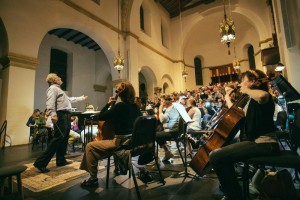 Paul Moravec and I are at work on a new project—but this time, it isn’t an opera.
Paul Moravec and I are at work on a new project—but this time, it isn’t an opera.
My old friend John Sinclair is celebrating his twenty-fifth anniversary as artistic director of the Bach Festival Society of Winter Park, about whose activities I’ve previously written in this space. John is a conductor of real quality who has turned the Bach Festival Society’s choir and orchestra into ensembles of distinction and consequence, and so the festival has decided to honor him by commissioning a work for soloists, chorus and orchestra. Paul and I, to our delight, will be writing it together. In fact, the two of us are getting together tomorrow morning for a working session, our first since we wrote The King’s Man in 2013, to start talking about the various nuts-and-bolts matters that go into the creation of a new composition.
The piece will be a setting by Paul of a poem called Music, Awake! that I started writing when I went to Baylor University last October to give a pair of lectures about Louis Armstrong and Whit Stillman. It’s a six-stanza choric ode to the universal power of music that was inspired by the transformation scene from The Winter’s Tale, a Shakespearean moment that Paul and I both love: Music, awake her; strike!/’Tis time; descend; be stone no more; approach;/Strike all that look upon with marvel.
It would be an understatement to say that poetry isn’t my usual line, but I’d been talking to John about the possibility of my collaborating with Paul on a piece for the Bach Festival, and something unexpected came over me the night before I flew back to New York. I immediately sat down and wrote the first draft in a frenzy of what I hope was inspiration.
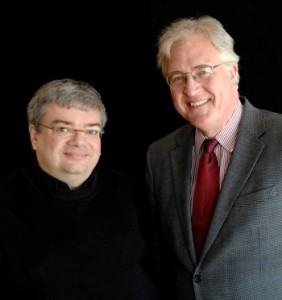 This is the antiphon from the fifth stanza:
This is the antiphon from the fifth stanza:
Out of mystery, faith;
Out of chaos, form;
Out of anger, love;
Out of terror, hope;
Out of silence, tone.
I like what Paul said about what we have in mind: “We intend Music, Awake! to be not only a tribute to John Sinclair and the Festival but an homage to all who dedicate their lives to the miraculous art of music.”
Assuming that all goes well, Music, Awake! will be premiered by the Bach Festival Choir and Orchestra in April of 2016. I’ll keep you posted between now and then.
 Richard Rodgers is interviewed by James Day on an episode of CUNY-TV’s Day at Night originally taped in 1974. A new revival of The King and I, which Rodgers wrote with Oscar Hammerstein II in 1951, opened last week at Lincoln Center Theater:
Richard Rodgers is interviewed by James Day on an episode of CUNY-TV’s Day at Night originally taped in 1974. A new revival of The King and I, which Rodgers wrote with Oscar Hammerstein II in 1951, opened last week at Lincoln Center Theater:
(This is the latest in a series of arts-related videos that appear in this space each Monday and Wednesday.)
 “Death ends all things and so is the comprehensive conclusion of a story, but marriage finishes it very properly too and the sophisticated are ill-advised to sneer at what is by convention termed a happy ending. It is a sound instinct of the common people which persuades them that with this all that needs to be said is said: When male and female, after whatever vicissitudes you like, are at last brought together they have fulfilled their biological function and interest passes to the generation that is to come.”
“Death ends all things and so is the comprehensive conclusion of a story, but marriage finishes it very properly too and the sophisticated are ill-advised to sneer at what is by convention termed a happy ending. It is a sound instinct of the common people which persuades them that with this all that needs to be said is said: When male and female, after whatever vicissitudes you like, are at last brought together they have fulfilled their biological function and interest passes to the generation that is to come.”
W. Somerset Maugham, The Razor’s Edge
In the second of my two Wall Street Journal drama columns for this week, I report on another pair of Broadway openings, The King and I and Finding Neverland. Here’s an excerpt.
* * *
Point for point, “The King and I,” which has just been revived by Lincoln Center Theater for the first time on Broadway since 1998, is the most artistically successful of the Rodgers and Hammerstein musicals. The book is intelligent and affecting, the score inspired, and Jerome Robbins’ choreography for the original production, which survives in its entirety, is as lovely today as it was in 1951. But “The King and I” presents any company that wants to revive it with three major problems. The palatial scenic requirements make it impossible to mount on the cheap, and Yul Brynner’s legendary star turn as the King of Siam, which was documented in the well-remembered 1956 screen version, is to this day oppressively familiar to all who dare to attempt his signature role.
No less problematic in our post-colonialist age of political correctness is the fact that Oscar Hammerstein II, impeccably liberal though he was, portrayed the King of Siam as a spoiled, willful man-child sorely in need of a stiff dose of the Western values that are spoon-fed to him by Anna, the British widow whom he imports to tutor his children. That premise, to put it mildly, is no longer in elite favor. How to make it go down smoothly?
Director Bartlett Sher’s solution to the second and third problems is to cast an Asian actor, Japan’s Ken Watanabe, in Brynner’s role while simultaneously underlining the show’s proto-feminist aspect. As for the first problem, Lincoln Center Theater has “solved” it by spending a barrel of money on this production, in which Michael Yeargan, the set designer, makes gloriously creative use of the Vivian Beaumont Theater’s deep thrust stage. The results are satisfying to the highest possible degree: I doubt I’ll see a better production of “The King and I” in my lifetime.
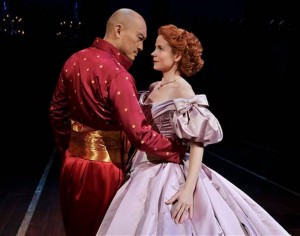 Mr. Watanabe gets out from Brynner’s long shadow by giving a performance that is gleefully playful, regally commanding and wholly his own. His thick Japanese accent is something of a trial in “A Puzzlement,” but that’s the only thing slightly wrong with him, and Kelli O’Hara leaves nothing whatsoever to be desired as Anna. Firm but not priggish, touching but never sentimental, she stands up to Mr. Watanabe like a redwood to a tornado…
Mr. Watanabe gets out from Brynner’s long shadow by giving a performance that is gleefully playful, regally commanding and wholly his own. His thick Japanese accent is something of a trial in “A Puzzlement,” but that’s the only thing slightly wrong with him, and Kelli O’Hara leaves nothing whatsoever to be desired as Anna. Firm but not priggish, touching but never sentimental, she stands up to Mr. Watanabe like a redwood to a tornado…
“Innocuous” isn’t the kind of adjective that a drama critic longs to use to describe a new musical, but there’s nothing better to be said for “Finding Neverland,” the stage version of the 2004 Johnny Depp-Kate Winslet film about the writing of J.M. Barrie’s “Peter Pan.” Not only does James Graham’s too-tasteful book bleach all the strangeness out of the story of Barrie’s relationship with the children who inspired his 1904 play, but the Gary Barlow-Eliot Kennedy score is an endless string of skim-milk pop-rock anthems, and Matthew Morrison (lately of “Glee”) is insipid as Barrie….
* * *
To read my complete review of The King and I, go here.
To read my complete review of Finding Neverland, go here.
A video montage of scenes from the Lincoln Center Theater revival of The King and I:
Here’s my list of recommended Broadway, off-Broadway, and out-of-town shows, updated weekly. In all cases, I gave these shows favorable reviews (if sometimes qualifiedly so) in The Wall Street Journal when they opened. For more information, click on the title.
BROADWAY:
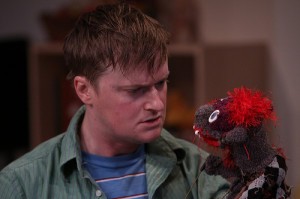 • Hand to God (black comedy, X, absolutely not for children or prudish adults, many performances sold out, reviewed here)
• Hand to God (black comedy, X, absolutely not for children or prudish adults, many performances sold out, reviewed here)
• A Gentleman’s Guide to Love & Murder (musical, PG-13, virtually all performances sold out, reviewed here)
• It’s Only a Play (comedy, PG-13/R, closes June 7, some performances sold out, reviewed here)
• Matilda (musical, G, all performances sold out, reviewed here)
• Les Misérables (musical, G, many performances sold out, too long and complicated for young children, reviewed here)
• On the Town (musical, G, contains double entendres that will not be intelligible to children, reviewed here)
• On the Twentieth Century (musical, G/PG-13, nearly all performances sold out, closes July 5, contains very mild sexual content, reviewed here)
OFF BROADWAY:
• Alfred Hitchcock’s The 39 Steps (comedy, G, suitable for bright children, remounting of Broadway production, original production reviewed here)
IN BALTIMORE
• After the Revolution (drama, G/PG-13, unsuitable for children, closes May 17, reviewed here)
CLOSING SOON OFF BROADWAY:
• The Fantasticks (musical, G, suitable for children capable of enjoying a love story, closes May 3, reviewed here)
• Hamilton (historical musical, PG-13, closes May 3, moves to Broadway Aug. 6, reviewed here)
• Twelfth Night (Shakespeare, PG-13, two different stagings of the same play performed by the same cast in rotating repertory, closes May 2, reviewed here)
| M | T | W | T | F | S | S |
|---|---|---|---|---|---|---|
| 1 | 2 | 3 | ||||
| 4 | 5 | 6 | 7 | 8 | 9 | 10 |
| 11 | 12 | 13 | 14 | 15 | 16 | 17 |
| 18 | 19 | 20 | 21 | 22 | 23 | 24 |
| 25 | 26 | 27 | 28 | 29 | 30 | |
An ArtsJournal Blog